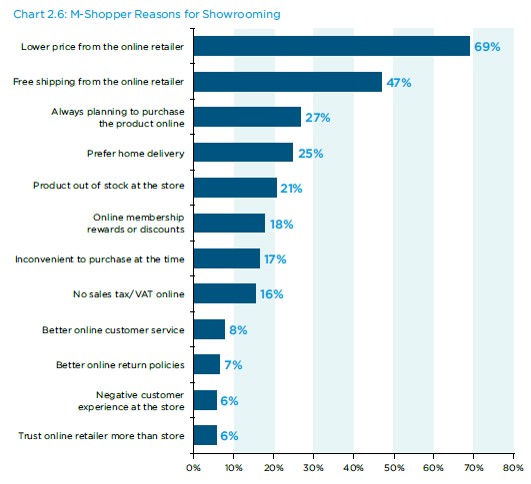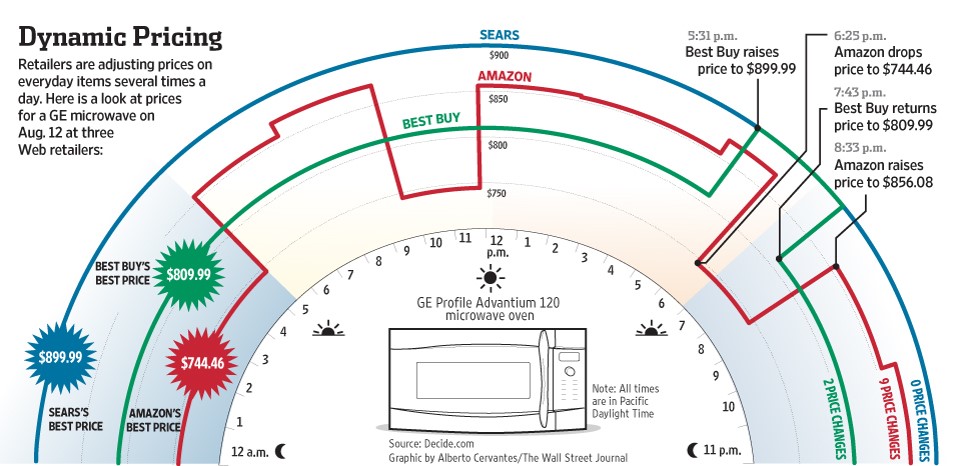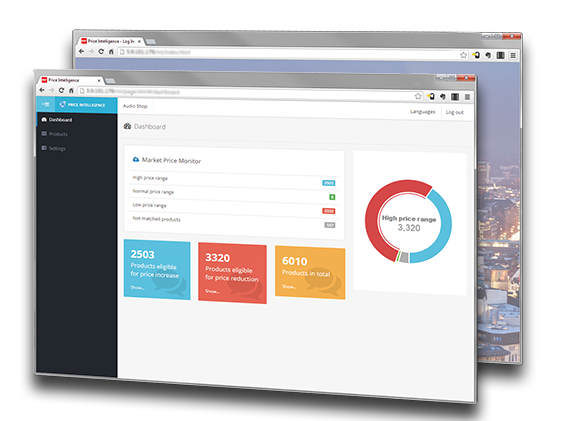Once upon a time: the history of retail without price transparency
You are visiting the sport equipment supplier of your confidence and having a look on the different models of ski. Slowly an insecurity develops within yourself: rather an all-mountain or a carver, freestyle or high-performance ski? But fortunately, a friendly salesman appears: “How can I help you?” A typical consultation follows: you are you skiing on prevalent pistes or also in deep snow? Do you make full use of the piste, with big bounds or would you like to ski a little faster down the mountain? The salesman recommends a model and explains the advantages. After a critical look on the price, he suggest one or two more inexpensive alternatives. You choose the attractive design and head off to the cash desk with anticipation.

Source: Showrooming and the rise of the mobile-assisted shopper, Matthew Quint, David Rogers, Center of Global Brand Leadership, Columbia Business School
Unfortunately this history more and more belongs to the category „one upon a time“ for many retailers. Normally the customers will not enter the sport shop clueless anymore, they first seek information about the desired products on the internet – If they still make it to the stationary shops at all and do not buy online.
Latest after the consultation of the salesman, they start to compare prices of the desired models in the internet – and it will not be a happy end for the salesman if they find a cheaper selling price there. The formula of the retail Value = price + assortment + information + convenience + experience1 is still relevant. Certainly the development in e-commerce deferred the focus increasingly in the directions of price and convenience.
Price comparison sites and online market places have led to a radical price transparency on the market, which involves rapid price changes. Sellers underbid themselves continuously with the price, to be ranked as top providers on the product detail page on Amazon. Even Amazon change their prices via dynamic pricing several times per hour. A just selling price that is too high even temporarily causes a fast decrease of the conversion rate. An attractive pricing, that also considers the competitors prices, will become an essential factor of success in the internet more and more.

Source: The Wall Street Journal
Based on this, several questions arise for sellers during their pricing process:
1. Which ones of my products are too expensive and how much?
The most obvious problem: the own products are more expensive than the competitors prices and thus will not be sold. Which products have to be reduced in price, to reach the relevant price area on comparison shopping sites and on online market places?
And how much less is the current market-determined price for this product? The price reduction cannot be a cure-all – the borders of profitability are accomplished too fast.
That is why the next question is even more important:
2. Which ones of my products are offered too cheap?
Often products are hidden in the assortment of the trader that are offered obviously cheaper than the actual market-determined prices. A possible higher marge passes away if the seller is able to identify these products, it is easy to fit the prices to the market and gain the margin potential without to absorb a significant decrease of the sales amount.
Now there is a third aspect becoming relevant during the analysis of the market prices: several competitors are selling the same product cheaper than the actual buying price of the retailer.
This makes it impossible to have a competitive selling price and raises the question:
3. Do I buy too expensive?
And yes, there will be surely products in the assortment of the seller whereby he could not negotiate the best buying conditions with his supplier. To know the market activity and to have comprehensive information about the market prices, immediately strengthens the negotiating position in the purchasing process and will help getting better buying conditions – in the best case.
Otherwise the trader recognizes that he isn’t competitive with this product and this conditions early in the process due to the higher level of transparency. He is able to adjust his assortment and save expensive storage area.
The lesson is clear: traders are forced to have a continuous look at the market prices and adjust their price strategy at it. Doing this manually is impossible. The effort, to analyze thousands of products in market places, comparison shopping sites and on websites of competitors, would be gigantic.

The new software-solution of parsionate offers a new valuable support for traders exactly in this area.
priceintelligence gathers the market prices of your products fully automatically on the internet, including availability information, estimated delivery times and delivery charges. The SaaS-platform represents the development of prices, visualizes the comparison with the competitors and offers concrete recommendations for action.
This plus of information allows the traders to be always one step ahead in the competitor’s Fast reactions on price changes and well-founded marketing decisions will be possible again. Sound a little bit like a fairytale? But it is the fact!
Please find more about priceintelligence on our website www.priceintelligence.net or get in personal contact with us.
Melissa Mergenthaler
+49 711/75886-6357
info@priceintelligence.net
1Chris Jones, „The Multichannel Retail Handbook“